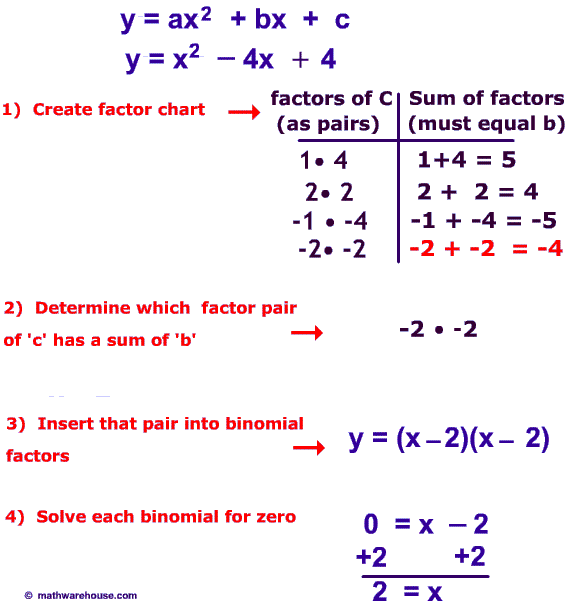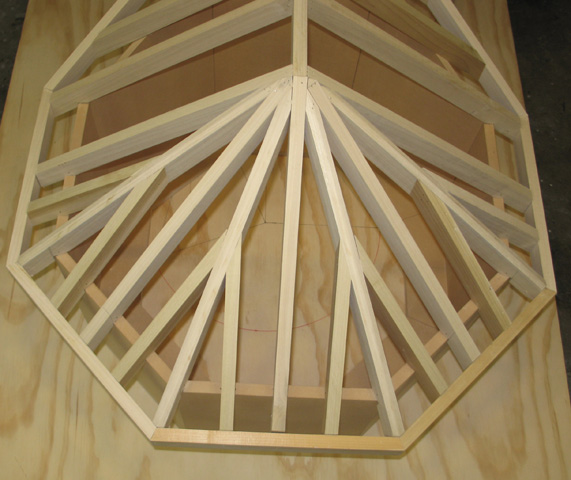With analytic geometry
Data: 1.03.2018 / Rating: 4.8 / Views: 921Gallery of Video:
Gallery of Images:
With analytic geometry
Why study analytic geometry? Science and engineering involves the study of quantities that change relative to each other (for example, distancetime, velocitytime, populationtime, forcedistance, etc). Analytical geometry or analytic geometry is also known as Cartesian geometry or coordinate geometry. It is a branch of mathematics which is a link between algebra and geometry. Analytical geometry deals with algebraic representation of geometrical figures. It pertains to representation of geometrical figures on a coordinate system. Analytic Geometry: (lesson 1 of 4) Basic Concepts. The distance between two points in the plane is the length of the line segment joining the two points. If the points have cartesian coordinates If the points have polar coordinates Midpoint of two points. Conic Sections The Parabola The set of all points in the plane whose distances from a fixed point, called the focus, and a fixed line, called the In analytic geometry, also known as coordinate geometry, we think about geometric objects on the coordinate plane. For example, we can see that opposite sides of a parallelogram are parallel by writing a linear equation for each side and seeing that the slopes are the same. Thinking of the analytic term greater than, notice how much easier it is to think of, for example, higher than, see, one point being higher than another or to the right of. You see, geometric concepts to name analytic statements, or instead of increasing, as we mentioned before, to say rising. This is the second course in the Georgia High School Mathematics sequence. With an integrated curriculum, Analytic Geometry will focus on mastery of these primary domains: Right Triangle Trigonometry, Coordinate Geometry, Complex Numbers, Quadratics, and Probability. Complex Analytic and Dierential Geometry JeanPierre Demailly Universite de Grenoble I Institut Fourier, UMR 5582 du CNRS SaintMartin dHeres, France A branch of geometry. The fundamental concepts of analytic geometry are the simplest geometric elements (points, straight lines, planes, secondorder curves and surfaces). The principal means of study in analytic geometry are the method of coordinates and the methods of elementary algebra. analytic geometry, branch of geometry geometry [Gr. , earth measuring, branch of mathematics concerned with the properties of and relationships between points, lines, planes, and figures and with generalizations of these concepts. Analytic geometry definition, a branch of mathematics in which algebraic procedures are applied to geometry and position is represented analytically by coordinates. Analytic Geometry is a branch of algebra that is used to model geometric objects points, (straight) lines, and circles being the most basic of these. Exploring Analytic Geometry with Mathematica is a 900page volume divided into nine parts: Introduction (Getting Started and Descarta2D Tour) Elementary Geometry (Points, Lines, Circles, Arcs, Triangles) Conics (Parabolas, Ellipses, Hyperbolas, Conics, Medial Curves) Analytic geometry is a branch of mathematics which study geometry using cartesian coordinates (polar coordinates) or valid transformation of coordinates in the description of geometric shapes. In the figure we can see how a point in 3space is described in polar coordinates and the introductionto analyticgeometry by peeceyrsmith, ph. This feature is not available right now. In plane analytic geometry a line is frequently described in terms of its slope, which expresses its inclination to the coordinate axes technically, the slope m of a straight line is the (trigonometric) tangent of the angle it makes with the x axis. Analytic geometry is a branch of geometry that represents objects using a coordinate system. It is heavily used in science and engineering. The twodimensional version of analytic geometry is typically taught in secondary school algebra courses, and is the version most people have encountered. Conic sections can be defined as the locus of point that moves so that the ratio of its distance from a fixed point called the focus to its distance from a fixed line called the directrix is constant. The constant ratio is called the eccentricity of the conic. An Introduction to Analytic Geometry and Calculus covers the basic concepts of analytic geometry and the elementary operations of calculus. This book is composed of 14 chapters and begins with an overview of the fundamental relations of the coordinate system. Calculus with Analytic Geometry by Dartmouth College intro to analytic geometry Please note that at 6: 15 I have accidentally used the reciprocal of the slopes of PA and AQ to develop the equation of a line. Goo A great book, this covers all of the major topics seen in an introductory analytic geometry class. The extensive treatment of proofs and fundamental concepts makes this book stand out, and serves to solidify the student's understanding of the material. the analytical geometry in this book is a geometry of threedimensional space E. We use the symbol E for to denote the space that we observe in our everyday life. Despite being seemingly simple, even the empty space E possesses a rich variety of properties. These properties reveal through the properties of Analytic Geometry unifies Algebra and Geometry through the concept of coordinate system. Ren Descartes (1596 1650) published in 1637 his La Gomtrie and introduce the Rectangular Coordinate System which is also called Cartesian Coordinate System in honor of his name. Analytic geometry, calculus, roots of equations, vector analysis. But this doesn't cover very well the actual topics that I think are most likely going to be important, so this is the outline that I will follow. Analytic geometry definition is the study of geometric properties by means of algebraic operations upon symbols defined in terms of a coordinate system called also coordinate geometry. the study of geometric properties by means of algebraic operations upon symbols defined in terms of a coordinate system called also coordinate Analytic Geometry. The study of the geometry of figures by algebraic representation and manipulation of equations describing their positions, configurations, and separations. Analytic geometry is also called coordinate geometry since the objects are described as tuples of points (where in the plane and 3 in space) in some coordinate system. In classical mathematics, analytic geometry, also known as coordinate geometry, or Cartesian geometry, is the study of geometry using a coordinate system. This contrasts with synthetic geometry. Analytic geometry is widely used in physics and engineering, and also in aviation, rocketry, space science, and spaceflight. It is the foundation of most modern fields of geometry, including algebraic. Analytic Geometry Study Guide 2) Use this triangle to answer the question. This is a proof of the statement If a line is parallel to one side of a triangle and intersects the other two sides at distinct EMBED (for wordpress. org item description tags) Calculus with Analytic Geometry presents the essentials of calculus with analytic geometry. The emphasis is on how to set up and solve calculus problems, that is, how to apply calculus. The initial approach to each topic is intuitive, numerical, and motivated by. Online shopping for Analytic Geometry from a great selection at Books Store. 1 Analytic Geometry Much of the mathematics in this chapter will be review for you. However, the examples will be oriented toward applications and so will take some thought. Introduction The writing of this report was originally provoked, both by frus tration with the lack of rigor in analytic geometry texts, and by a belief that this problem can be remedied by attention to mathe The first was the creation of analytic geometry, or geometry with coordinates and equations, by Ren Descartes ( ) and Pierre de Fermat ( ). This was a necessary precursor to the development of calculus and a precise quantitative science of physics. Analytic geometry, also called coordinate geometry, mathematical subject in which algebraic symbolism and methods are used to represent and solve problems in geometry. The importance of analytic geometry is that it establishes a correspondence between geometric curves and algebraic equations. Click on the units to see the curriculum framework for each unit we will learn in class. In classical mathematics, analytic geometry, also known as coordinate geometry, or Cartesian geometry, is the study of geometry using a coordinate system. This contrasts with synthetic geometry. Analytic geometry is widely used in physics and engineering, and is the foundation of most modern fields of geometry, including algebraic, differential, discrete and computational geometry. In plane geometry the lengths of line segments are considered. in referring to directed segments. but directions In analytic geometry. and C are three points of a directed line. since the direcagrees with the assigned positive direction of the line as The segment AB indicated negative. Analytic geometry is a branch of mathematics that uses algebraic equations to describe the size and position of geometric figures on a coordinate system. Developed during the seventeenth century, it is also known as Cartesian geometry or coordinate geometry. Analytic Geometry covers several fundamental aspects of analytic geometry needed for advanced subjects, including calculus. This book is composed of 12 chapters that review the principles, concepts, and analytic proofs of geometric theorems, families of lines, the normal equation of. Analytic geometry is the study of geometry on a grid called the coordinate plane, or xyplane. Certain aspects of geometry can be handled very easily in the coordinate plane: distance between. In analytic geometry, also known as coordinate geometry, we think about geometric objects on the coordinate plane. For example, we can see that opposite sides of a parallelogram are parallel by by writing a linear equation for each side and seeing that the slopes are the same. Analytic geometry is the study of geometry via algebra and coordinate systems. While doing a problem in a given coordinate system, it may be convenient to introduce new coordinate axes parallel to the given ones. This operation is called shifting or translating the. The text is written for the oneterm analytic geometry course, often taught in sequence with college algebra, and is designed for students with a reasonably sound background in
Related Images:
- Since you ve been gone
- The haunting hour s01e01
- Kermits Swamp Years
- Marvels agent of shield s02e02
- Windows xp lite pt pt
- 720p x264 french
- The history of marijuana
- Busta rhymes itunes
- 720p web 1981
- Berger paints colour guide pdf
- Gold rush go big or go home
- Sverige PA Svenska Bok
- F1 2007 GAME
- How i met your mother s08e17
- Kontor Top of the Clubs vol
- Beast of the southern wild nl
- I am not a human being 2 deluxe edition
- A tribute to muddy waters
- Siglos karaoke professional
- Tomcraft sure shot
- Bravo two zero nl
- Cohen and Tate
- Gynecology and obstetrics
- Porcupine tree xmii
- All video songs mp3
- Discipline Equals Freedom Field Manual
- Season 7 true blood
- Chance pa dance
- Adobe after effects tutorial
- Discovery ch how its made
- The fan il mito ita
- Just dance kids ntsc
- HTML Guardian Decrypter
- Electro swing 2014
- Its about us
- Download Nero 7 Startsmart Serial Completo
- Ultimate spiderman 116
- Modern family ettv
- Pc pes 2018 pc
- 0 day week of 2012 01
- Tycoon city new york crack
- Brian tracy the power of clarity
- Strike commando 2
- Diddy p diddy
- Ugly betty s02 hdtv
- Flight of pho
- Gi joe 2 2012
- Craig ferguson 2014 07
- Game of thrones e01 s03
- Big bang 720p s08
- Pulse 2 720p
- Roots manuva run come
- Adobe Photoshop CS mac
- Covert affairs s03e11 720p
- X factor hd
- Die hard 4 eng xvid
- Borang pertukaran politeknik polisas
- Please kill me
- Mass effect 2 pl
- Hercules 2014 720p hindi
- Steven seagal 1991
- Layla rose shyla
- Game of thrones s03 e01
- Mad punx and english dogs
- Kaze tachinu 2013
- The honeymooners 1080
- Last resort s01e12 720p hdtv
- Secret garden white
- The mommy xperience
- Black films dvdrip
- Tracks 2013 1080
- 2014 may videos
- Salman khan songs
- Haven s04e01 eztv
- Never die alone 2004 1080p
- Dvdiso iso dvd
- Paranoia 2013 720
- Bold and the beautiful may 26
- North American Scum
- Baby sister hot
- Religion Catolica 1 Primaria Nuevo Kaire












